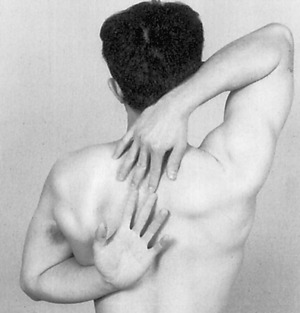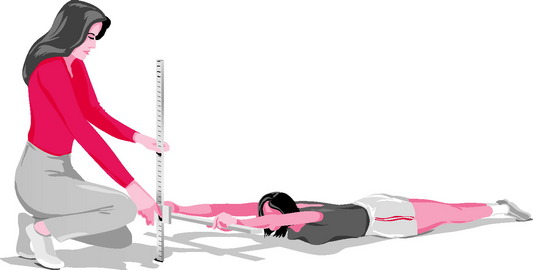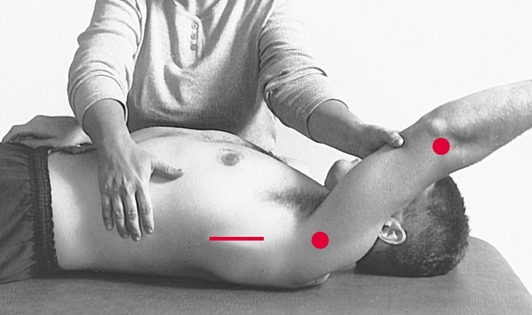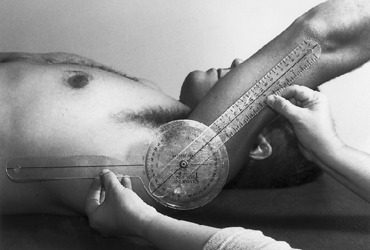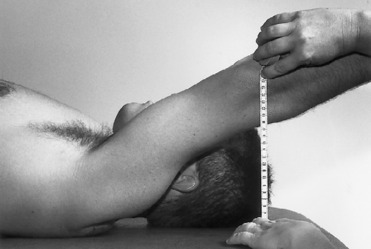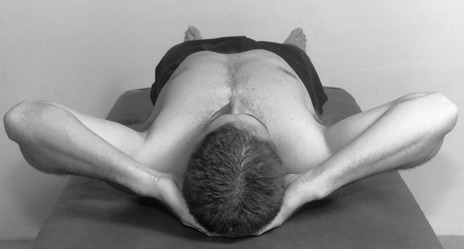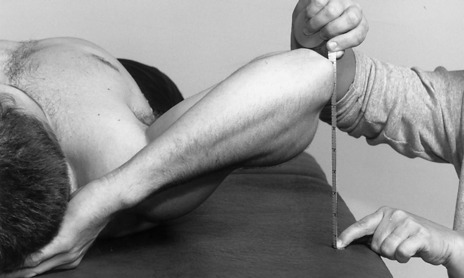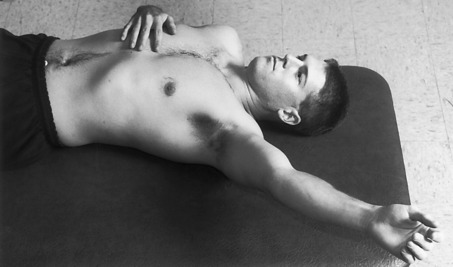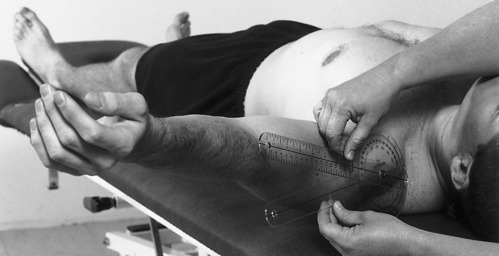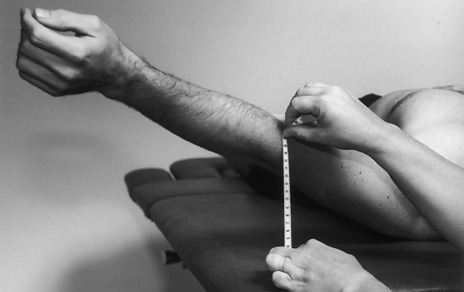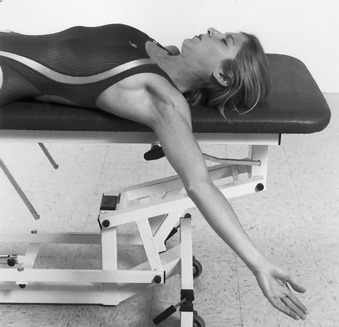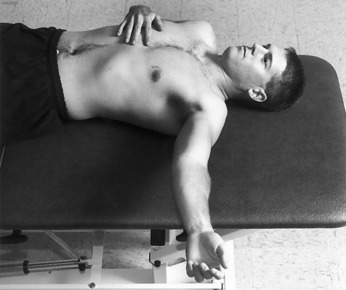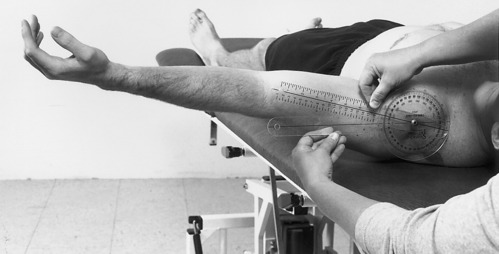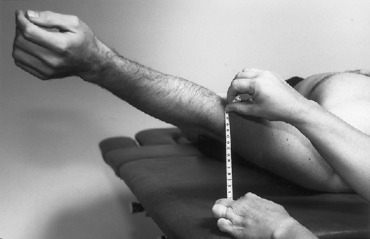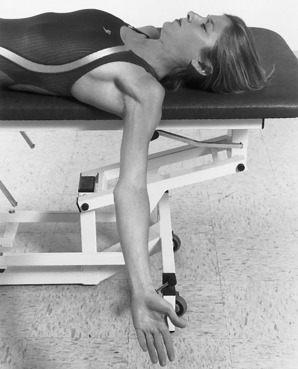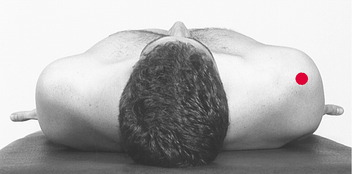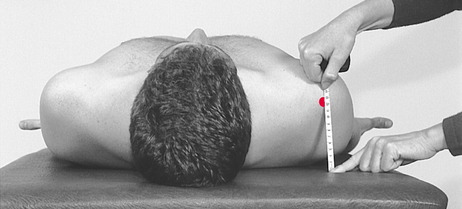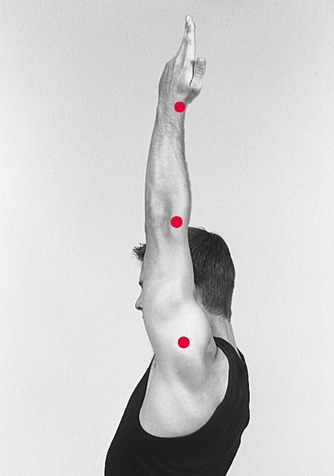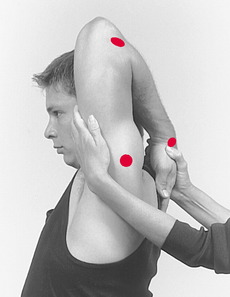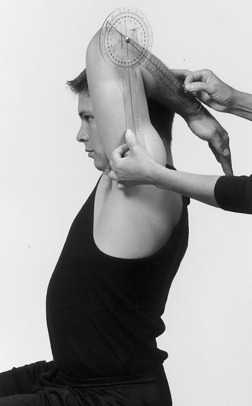Chapter 6 In 1959, a physical education text published by Scott and French8 introduced a test for upper extremity flexibility, called the “opposite arm across the back” test. Hoppenfeld3 later referred to this test as “Apley’s scratch test.” In 1960, Myers7 described these tests to measure the muscle length of the shoulder and elbow, referring to this combination of tests as the “y position of the arms.” The test (herein referred to as Apley’s scratch test) consists of two parts that, depending on the author, could be performed on one extremity at a time or on two extremities simultaneously. One part involves asking the individual who is being tested to place the palm of the hand on the back by reaching behind the head and down between the shoulder blades as far as possible (Fig. 6-1). Hoppenfeld3 suggested that this maneuver yielded a measurement of shoulder lateral rotation and abduction, and Sullivan and Hawkins9 suggested that the test was a measurement for shoulder lateral rotation. The second part of Apley’s scratch test consists of asking the subject to place the dorsum of the hand against the back and to reach behind the back and up the spine as far as possible (see Fig. 6-1). Hoppenfeld3 suggested that this maneuver measured shoulder medial rotation and adduction; Sullivan and Hawkins9 suggested that the test examined shoulder medial rotation; and Mallon et al6 suggested that the test measured shoulder medial rotation and extension, elbow flexion, and scapular movement. Techniques for documentation of the measurement have varied. Scott and French8 suggested measuring the distance between the tips of the fingers of both hands when the two parts of the test are performed simultaneously. Goldstein2 suggested performing the test one upper extremity at a time and recording the distance between the spinous process of C7 and the tips of the fingers. Finally, an alternative measurement presented by Magee5 is to have the individual perform the test one extremity at a time and record the levels of the vertebrae that the fingers most closely approximate. In a text on flexibility written in 1977, Johnson4 described the shoulder and wrist elevation test used to measure shoulder flexibility. This test requires the individual to lift a stick or broom handle until the upper extremities are fully elevated overhead while the individual is lying in a prone position with the chin on a stable surface (Fig. 6-2). The individual raises the stick upward as high as possible by flexion at the shoulders. Two methods have been described for documenting the amount of shoulder elevation achieved in this test. The first is simply to measure the distance from the stable surface to the stick.1 In the second, which takes into consideration the length of the individual’s upper extremity, the length of the upper extremity is measured, and the test score is determined by subtracting the height to which the stick is raised from the length of the arm.4 A score of 0 is considered perfect. Figures 6-3 through 6-33 illustrate the techniques for flexibility testing for the upper extremity that are included in this chapter. These measurement techniques were chosen because they can be performed passively by the clinician or actively by the patient, the tests do not require patient strength, and the examination can be performed easily.
MUSCLE LENGTH TESTING of the UPPER EXTREMITY
Apley’s Scratch Test
Shoulder and Wrist Elevation Test
TECHNIQUES FOR TESTING MUSCLE
![]()
Stay updated, free articles. Join our Telegram channel

Full access? Get Clinical Tree


MUSCLE LENGTH TESTING of the UPPER EXTREMITY

